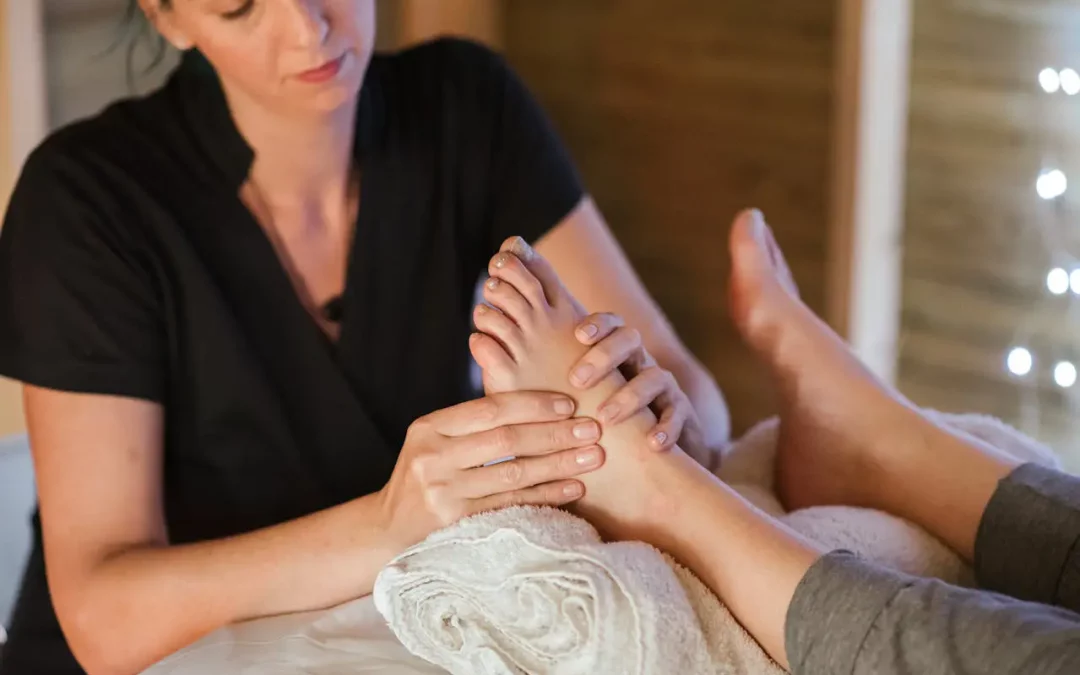Do you experience discomfort in your muscles after receiving massage therapy? Is this preventing you from involving in other tasks that should be done for your daily living? This blog is for you if the answer to any of the questions is yes! The 6 important tips for treating muscle soreness following your massage therapy are listed below.
1. Hydrate
Enough water consumption is a smart idea whether or not you feel sore after a massage. Sometimes, before and after the massage session, drinking plenty of water can help your muscles rid themselves of toxins and metabolic waste that may be causing pain and discomfort.
You should consider consuming coconut water, sports drinks, or other alkaline hydrating liquids in addition to water. These can assist in restoring essential minerals and nutrients lost during physical activity or massage. It is preferable to avoid alcohol and caffeine before and after your massage due to the ability to dehydrate the body.
Dehydrated people have less water content in their bodies, which could cause damage to their joints. Since water makes up the majority of muscles, it can be quite beneficial to stay hydrated, especially after a massage when your muscles have been stretched out.
SEE ALSO – 10 IMPORTANT ACTIVITIES TO AVOID AFTER A MASSAGE
2. Relaxation
It is important to give your body some time to relax and heal after your massage. This can support general relaxation and well-being by lowering muscle soreness and inflammation.
Following a massage, there are various ways to rest. You could decide to take a nap, meditate, or just lie down and relax. Make sure your chosen resting style is free from stress and distraction.
One of the best things you can do for your body to heal itself and relax is to sleep. Getting rest and massage at the same time may be exactly what your body needs to fully benefit from the massage. Resting for a while after a massage can greatly assist in keeping your muscles relaxed for as long as possible.
3. Apply Heat
Applying heat packs to affected areas can help relieve pain since the warmth helps to relax muscle tissues, which reduces pain and enhances recovery. When heat is applied, it makes blood vessels widen to improve blood flow to the affected muscles. More oxygen and nutrients are delivered by this increased blood flow, which is essential for repairing muscle damage and lowering discomfort. Furthermore, heat helps muscles relax by reducing stiffness and cramps.
It is very important to wait at least 24 hours after the massage session for any of the discomfort to go down to regulate heat efficiency. To avoid causing skin irritation, apply heat packs for a maximum of 15-20 minutes continuously, making sure the temperature is just warm enough to touch. Depending on the preferences and the area to be treated, you can take either wet heat (warm towels or baths) or dry heat (heating pads).
4. Gentle Stretching
It is highly essential to stretch slowly and softly; sudden motions could make post-massage
discomfort worse. Instead, concentrate on making deliberate, gradual motions that let your muscles stretch and relax.
After your massage, gently extend your body while concentrating on your breathing. Start with easy stretches that focus on the body parts that your massage dealt with. In addition to helping to improve blood flow and elasticity in the muscles, stretching can also aid in lowering inflammation and boosting healing.
SEE ALSO – IMPORTANT TIPS FOR GETTING READY FOR A MASSAGE
5. Epsom Salt Bath
Taking a bath can be a wonderful approach to keep your body relaxed and soak your muscles. Just fill a hot bath with two cups of Epsom salt and soak for fifteen to twenty minutes to create an Epsom salt bath. To avoid your skin dryness, wash off the salt after the bath and apply moisturizer. Moreover, make sure the water temperature is acceptable.
Magnesium sulfate, an ingredient in Epsom salts, can ease muscle tension and minimize swelling. Epsom salts are beneficial for reducing swelling, relieving aches and pains in the muscles, and enhancing circulation when added to a hot bath.
6. Light Physical Activities
Walking, stretching, and slight yoga are examples of simple physical activities that can help increase blood circulation without straining the muscles. Post-massage therapy, involving walking and stretching activities aids in preventing stiffness and promotes the body’s natural pain-relieving hormone release, which helps lessen pain.
Such minor physical activities also help you to relieve muscle tension, improve flexibility, and increase blood flow. Regularly doing such exercises will keep you healthy and fit without any problems with your joints, muscles, and the entire body.
Conclusion
After a massage, some people suffer mild post-massage pain now and then. Even though it can be uncomfortable, it is usually short-lived and easily relieved. Post-massage soreness can be reduced by drinking plenty of water, relaxing, stretching gently, and having a hot bath or shower with Epsom salts.
Herbs, aromatic oils, light physical activities, and gentle stretching can all help ease post-massage discomfort. Even if you are sore after getting a massage, it is still worth it because the long-term advantages of massage therapy exceed the short-term discomfort.

